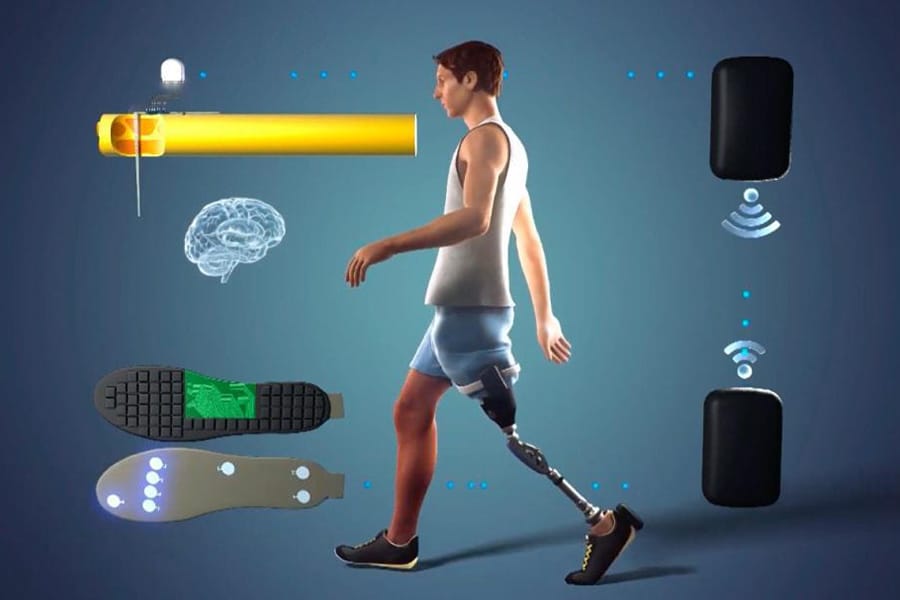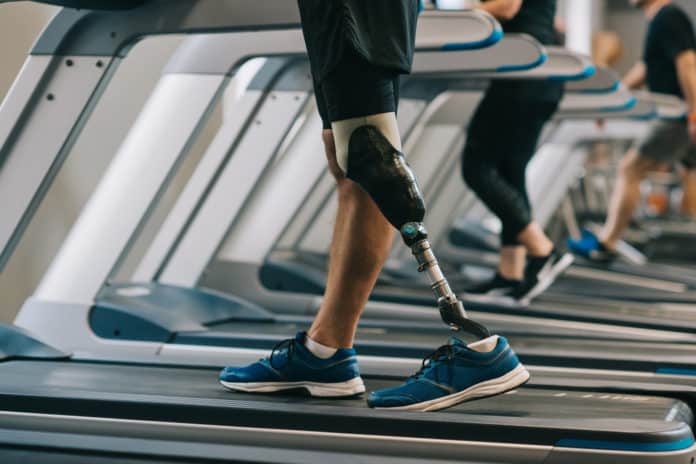While walking, healthy persons can feel where their feet touch the ground. The nervous system constantly draws on this sensory feedback to control leg movements. However, people with prostheses lack such feedback. It is, therefore, hard for them to walk evenly and confidently. Researchers have long been trying to give robots and prosthesis wearers this sense of touch.
Now, a team of researchers led by ETH Zurich have developed a bionic prosthesis that tries to make it easier for amputees to get around by letting them ‘feel’ surfaces again. The team has modified an off-the-shelf prosthetic leg with tactile sensors and implanted four tiny electrodes into the residual nerves in the amputees’ thighs. This gives wearers a sense of knee movement and feedback from the sole of the foot on the ground.
They used a commercially available Össur prosthetic leg, which included a microprocessor and an angle sensor in the knee joint, and added an insole with seven sensors to the foot. Those sensors transmit signals in real-time, via Bluetooth to a controller strapped to the user’s ankle.

An algorithm in the controller encodes the sensor signals into neural signals and delivers them to the nervous system via a small implant in the patient’s tibial nerve, located in the back of the thigh. The signals from the residual nerves are conveyed to the person’s brain, which then interprets those signals as feedback from the knee and foot.
The modified prosthetic was tested in two patients with above-the-knee, for over three months. It helped users walk faster, feel more confident, and consume less oxygen. This indicates that it was less strenuous than a traditional prosthesis for moving around.
They also tested the effects of activating the implant to relieve phantom limb pain. With just a few minutes of electrical stimulation per day, patients felt a significant reduction in pain. But they had to be present in the lab connected to an external device by a cable to undergo treatment.
For now, this is just a proof-of-concept, and with more testing, the team hopes to make it a permanent implant for patients.
